Sunday was the CET trip to Arashiyama, near Kyoto. So we met at 8:30 (on a Sunday!) at the train station and caught a succession of trains to Arashiyama. It was pretty uneventful, with the most interesting part probably being watching a woman come to the sudden and too-late realization that she was surrounded by a sightseeing group of mostly foreigners. Because by the time she realized this, it was already too late and she couldn’t do anything other than huddle closer to her book and hope we went away quickly. We weren’t even doing anything, other than being there having some conversations amongst us, but our mere presence was clearly disturbing.
Arashiyama was beautiful.
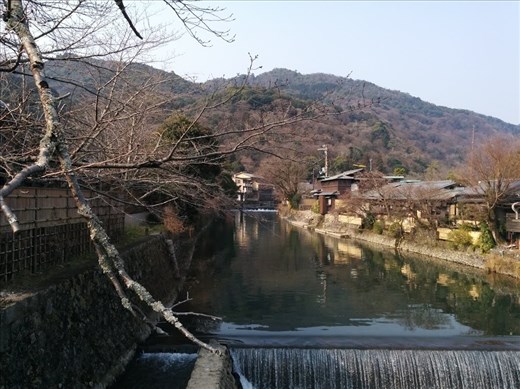
The first place that we went was Tenryu-ji, a Buddhist temple and world heritage site. There, Thomas Kirchner, a monk who had been born in New Haven and moved to Japan as part of a study abroad and then never left. He eventually got his bachelors from a Japanese university because his mother had written to his zen master expressing concern. Other than that, he’s just been living the life of a Buddhist monk.
So, what does this life look like? Well, it begins when you decide that you want to be a monk. For many people, becoming a monk is just the family business. Japan has some 27,000 Buddhist temples, most of them pretty small. But even the smallest need to be run by monks, and usually they’ll be the (oldest) son of the current head of the temple. (There’s no vows of celibacy after you leave the monastery.) So most people who come to a monastery come for a 2-3 year seminary course. A few others, generally far more self-driven, come instead for a 15-20+ year course in the zen koans, working through them koan by koan. However, even those people leave eventually. The only people who spend their entire lives in a monastery are the zen masters.
You’ll have a sponsoring monk, usually from the temple that you hope to take over. If, like Thomas Kirchner, you don’t have a temple, or really any pre-existing connection to Buddhism, you’d better find one quickly. They’ll help you get your paperwork ready, so when you show up and present it, the monks at the monastery will look at it, decide it’s all in order, and turn you away. But you don’t leave. Instead, you kneel down in the genkan (the generic Japanese word for entryway. They can be found in any house, and that’s where you put your shoes, but it literally means “dark barrier” and has its origins in Buddhism) and sit in a supplicant position for 2 days. You’re treated as a guest and given food and such, but still. Two days of sitting in entry hallway just to prove that you’re serious.
Once everyone else realizes you’re not going to leave, then let you into a room where you sit facing a wall for another three days. If you didn’t want to sit in quiet meditation for days on end, now would be a good chance to take a hint and leave. Because that’s literally what life in the monastery looks like.
An ordinary day begins at 4 in the winter and 3:30 in the summer, because they need to get up in time to be done with the morning sutras before the sun rises, and the sun rises early in summer. So they wake up, quickly fold their futons and shove it up in the overhead compartment that contains all their other belongings in the world (that’s a slight exaggeration. They also have a drawer at the bottom and a coat hook that they can put things. Still, not a lot of room for anything beyond the necessities.) Then they briefly wash up and go to red the morning sutras.
From there, they have three hours of meditation. During this time, they meet one on one with their zen master to discuss what they’ve learned. “And he would instruct us or whack us with his thick if he thought we’d been lazy, whatever he saw fit.” This goes until about 7, when they go to breakfast. Breakfast is a simple and quick meal, usually taking between 20 and 25 minutes and consisting of rice gruel and pickles, and is followed by sweeping the gardens, a repetitive task that allows for a continuation of the meditation.
From 8 to 11 is the morning activity. This is most commonly Takuhatsu, or begging. This serves a triple purposes. First of all, it’s a form of walking meditation. Secondly, it is a way of earning money, or, less commonly in Japan, food, for the monastery. And finally, it shows the interconnection of these branches, and makes it clear how dependent on everyone else the monks are for their current life.
When they don’t have takuhatsu, they have samu, meaning work. This is rather unique to the zen school of Buddhism, especially in places like China and Japan. It’s practical, especially when your monastery is on a mountain, to garden instead of trying to find people, let alone people who would give you money.
Finally, days with a four or a nine in them are rest days. This is a common Japanese belief, since “4” and “death” share the same pronunciation, as do “9” and “suffering.” Therefore, to avoid these unlucky days the monks will have time to themselves to clean the monastery, take baths, shave their heads, and even have some free time.
Around 11 they’ll have lunch, though they must finish before noon, since a part of Buddhism says that they can’t continue to eat after noon. After lunch, they have an hour rest, and in the afternoon they have more samu. And then at 16:00 they have the evening meal.
Remember the beginning of the last paragraph where I said they had to stop eating by noon? Yeah… Basically, East Asia does Buddhism slightly differently. The climate is colder, and they have samu, which makes people hungrier. For a while, they tried to compensate by putting a warm rock on their bellies (called a “medicine stone”) but eventually they decided this was dumb and they should just eat. The meal is still rather simple, and still called “medicine stone,” but it exists.
From 5-9 they have more seated meditation, and then at 9 they pull their futons down and get ready for bed. However, before they actually go to sleep, they must go outside for another two hours minimum of nighttime seated meditation. And then they can go to sleep for real, only to be woken up 4-5 hours later.
Despite the lack of sleep, Thomas Kirchner insists it’s a healthy lifestyle. In part because because meditation and sleep are kind of similar, so because they spend so many hours meditating, they don’t need much sleep. It’s certainly a simple lifestyle, and one that I’m pretty sure would drive me crazy.

Even though I wouldn’t want to jump into several years of monastery life, I was definitely up for twenty minutes of sitting in lotus position trying to clear my head and getting hit by a stick. (The blow was voluntary for us, and quite probably lighter than it would have been for real novices.) In a not terribly shocking turn of events, I did not reach inner truth and enlightenment.
After the lecture and meditation concluded, we had two hours of free time to look around the gardens and the town and get lunch.
The gardens were of course beautiful.
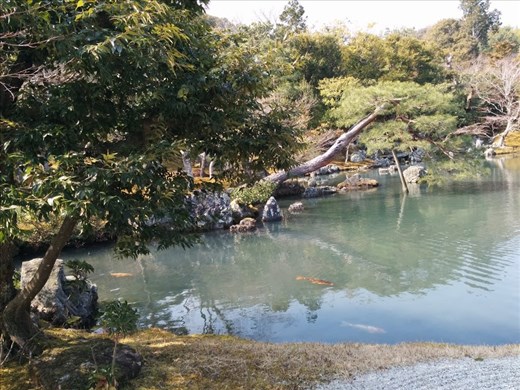
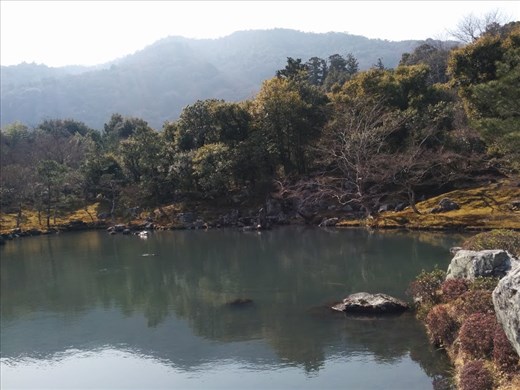
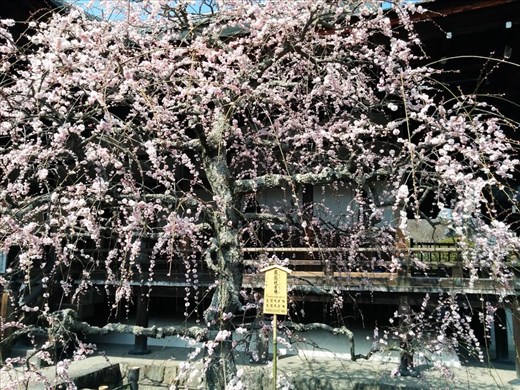
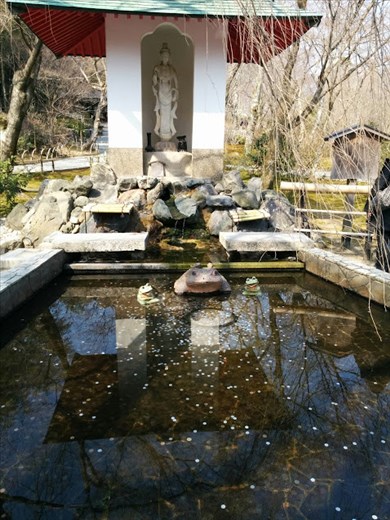
Lunch was tempura udon/curry rice (I split with Elena, who was eying the same two options I was) and then we listened to Jin’s suggestion and got matcha… stuff. No actual matcha, but Elena got a matcha latte, a lot of other people (myself included) got matcha dango, and some people got matcha ice cream. As we were looking around, I saw a Sakura Black Tea, and gave into the temptation to buy it. Even though I’d just gotten tea the day before. It was sakura, and I’m definitely not going to get enough of that in the coming weeks.
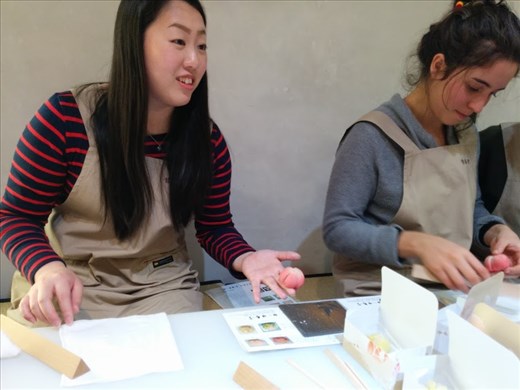
At 14:00, we all met up and headed to the Washiki shop to make them. Which mostly involved being handed dough and told how to shape it. The result was that we could make pretty sweets without learning how to actually make them. And mostly I was just imitating what other people were doing, since I caught very few of the words that they were saying. It was a fun, and we got actual matcha at the end to drink with the sweets. And then we caught a train back and I could try and catch up on my homework due Monday. I really missed my previous three-day weekends...